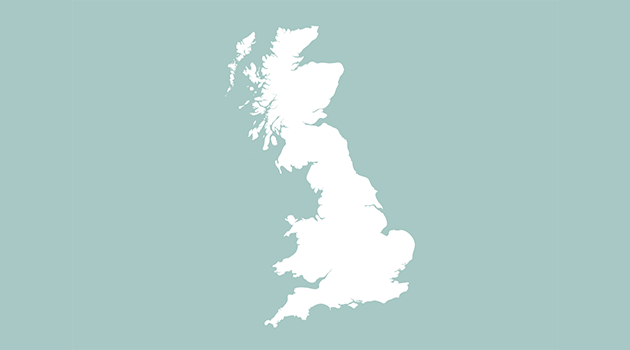Almost 9,000 chain stores vanished from the retail map of Great Britain in the first six months of last year, according to research compiled for PwC by the Local Data Company. The findings show that while 3,488 new shops sprang up in that time frame, 8,739 closed their doors: a net loss of 5,251 branches.
Location was a key factor. While retail parks accounted for 634 net closures and shopping malls accounted for 1,464, some 3,643 outlets departed the high street. The figures paint a bleak portrait of a malaise that has gripped the local commercial hubs that once defined our idea of ‘home’ as much as our own addresses.
Turning around the high street’s decline is top of mind for the UK government. Its recent Levelling Up White Paper sets out three initiatives already in train, and one in development, that are designed to reverse the trend:
- High Streets Strategy: this makes it easier to convert empty shops to new uses, such as homes. It grants automatic rights for pubs, restaurants and cafes to allow takeaway and al fresco dining. It sets higher standards for streets’ cleanliness and safety.
- Temporary business rates relief of £1.7bn: this covers up to 400,000 retail, hospitality and leisure properties until the end of 2023. Combined with a five-year freeze in the business rates multiplier, the scheme aims to ensure that all ratepayers in England will receive a tax cut.
- High Streets Task Force: helping communities regenerate their high streets in step with evolving needs, this unit currently provides 84 local authorities (LAs) with access to expertise in planning, placemaking and design – with a further 68 LAs set to benefit in the coming months.
In addition, to resolve supply and demand issues, the government plans to empower LAs to require landlords to rent out vacant properties to prospective tenants.
But how did the high street get into this slump? And are those initiatives enough to pick it back up again?
Digital surge
First of all, it is important to note that there is still something to fight for.
In a recent analysis of 60 UK towns and cities, payments provider Mollie earmarked Plymouth, Barnsley, Sunderland, Swansea and Blackpool as the top five locations where loyalty to the high street remains particularly strong.
With the top 10 rounded out by York, Wakefield, Burnley, Exeter and Stoke-on-Trent, the findings suggest that public interest in the high street lingers up and down the land, regardless of looming headwinds.
As for the nature of those headwinds, Tom Ironside, Director of Business and Regulation at the British Retail Consortium, explains: “Consumer habits have evolved as e-commerce has matured. The pandemic saw an initial surge in the number of sales made online, although that was primarily due to the forced closure of many shops. The proportion of online sales has since fallen – but remains around 10 percentage points ahead of 2019 levels.”
He notes that there will likely be further growth in online retail, especially as more retailers invest in omnichannel offerings. But it is clear that people value having physical shops in their community, too.
However, for Ironside, consumer habits are only part of the story. “Retail accounts for 5% of the economy,” he says, “but pays a quarter of all business rates. The current system is slow to reflect economic conditions and continues to hinder retail investment in shops, jobs and more. Businesses need a sustainable cost base if they are to locate in town centres or on high streets – it’s as simple as that.”
Switching channels
Despite such frustrations, the creativity of business owners elicits an upbeat prognosis from Ironside. “Retailers are using their resilience to adapt to, and grow with, their changing world,” he says. “There’s ample opportunity for national government and LAs to work hand in hand with businesses and residents to develop plans for high streets – helping to attract visitors and custom for years to come.”
So, what sort of facilities can owners harness to express that creativity? Jemma Lalwani, Partner and Commercial Property Solicitor at law firm and consultancy Oury Clark, suggests that they could explore Use Class E: a legal mechanism introduced in September 2020.
She explains: “Use Class E provides much greater flexibility and simplicity for business tenants, who can now change their establishments between any of the relevant use cases without requiring planning permission. For example, if you have a shop, you can now also use it as an office or a café without needing planning permission for that change of use. This opens up the option to have multifunctional spaces with much greater ease.”
Lalwani stresses that as the majority of standard leases restrict tenants to a single use, a switch under Use Class E would typically require consent from the landlord. However, she notes, landlords have a strong incentive to come through with a thumbs-up: “Use Class E makes leasing empty spaces easier.”
Rise of the ‘dark store’
But should retailers consider altogether more radical means of safeguarding the high street?
James Newman is EMEA Director at GreyOrange, a global tech firm that aims to modernise inventory management and order fulfilment through AI-driven software and robotics. He says: “Shopping is entering a new era called ‘phygital’: an omnichannel physical and digital retail world, in which effective fulfilment solutions are paramount for managing the growing demands that consumer purchasing criteria place on retailers.”
As an example of how that is working in practice, Newman cites the growing prevalence of ‘dark stores’: micro-fulfilment centres dedicated to rapid online ordering.
He explains: “These small, local stores have a fairly typical layout, with aisles and racks for goods – they’re just missing one major feature: customers. There’s enormous potential for these centres, where inventory and supply are based on local consumer trends and designed to meet demands for services such as next-day or same-day delivery.”
Newman notes that digital transformation is at the forefront of retailers’ minds for maintaining profitability in the face of staff shortages and other challenges – 73% are expecting to increase store technology investments this year.
Prioritising tech-enabled, personalised store experiences, while using in-store inventory to fulfil online orders, is ultimately what is required to create cohesion and rejuvenation in a retail setting, he adds.
So, are the government’s high street initiatives set out in the Levelling Up White Paper useful alongside these legal and technological developments? Ironside welcomes them, but notes that the devil will be in the detail. “A sustainable rejuvenation of high streets requires a thriving local economy that supports footfall and spend in shops,” he says.
“The mission on pride in place must be underpinned by a commitment to make the cost of physical retailing more sustainable. Meanwhile, the government’s broader aim to get more people into skills training requires greater flexibility on how retailers can use Apprenticeship Levy funds, so they can provide thousands more placements.”
Recent articles
Levelling up: making it work
The Levelling Up agenda is hugely ambitious, incorporating everything from infrastructure to education and skills, private investment to public procurement. Many factors must align in order to make a real difference.




